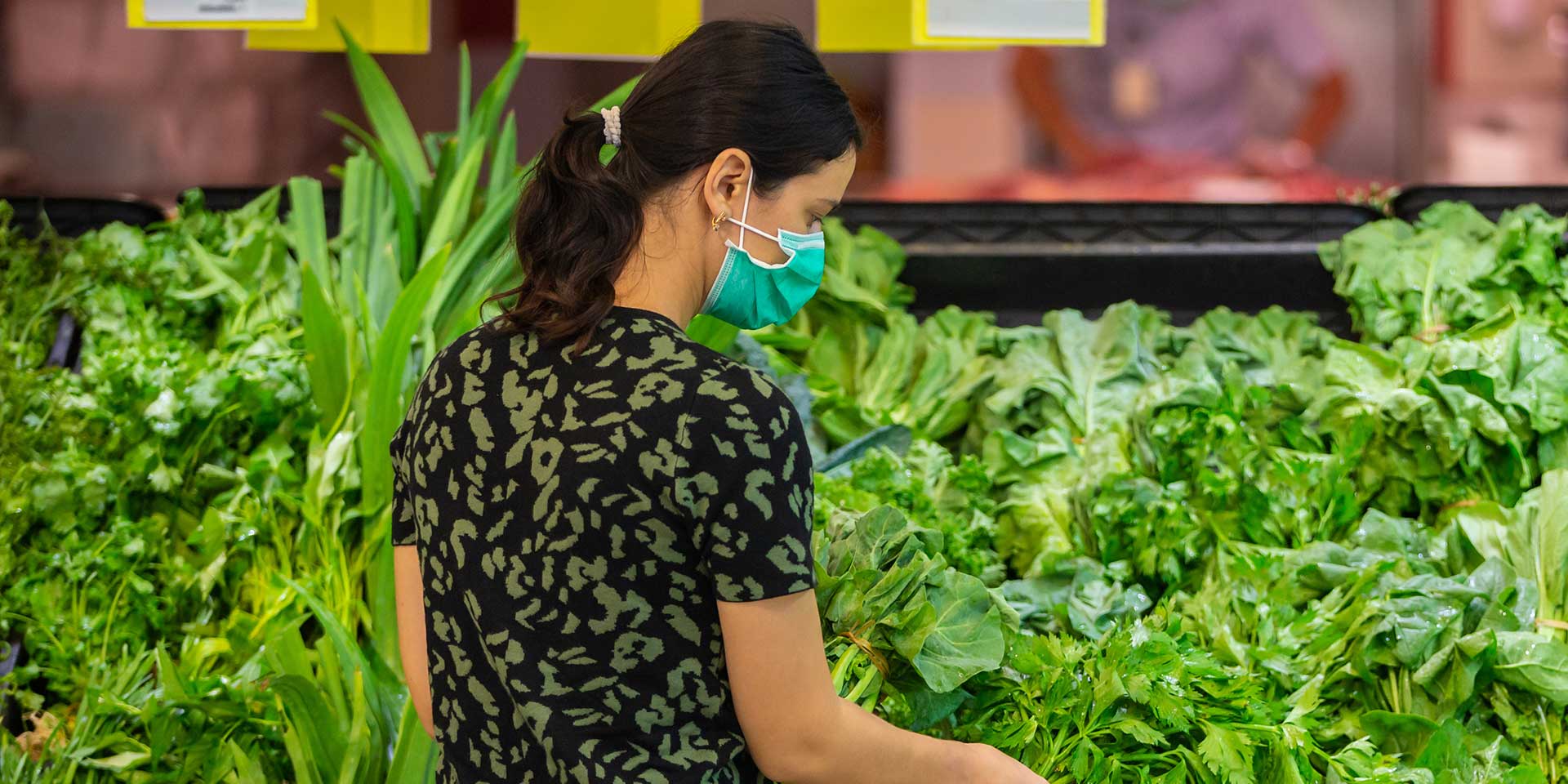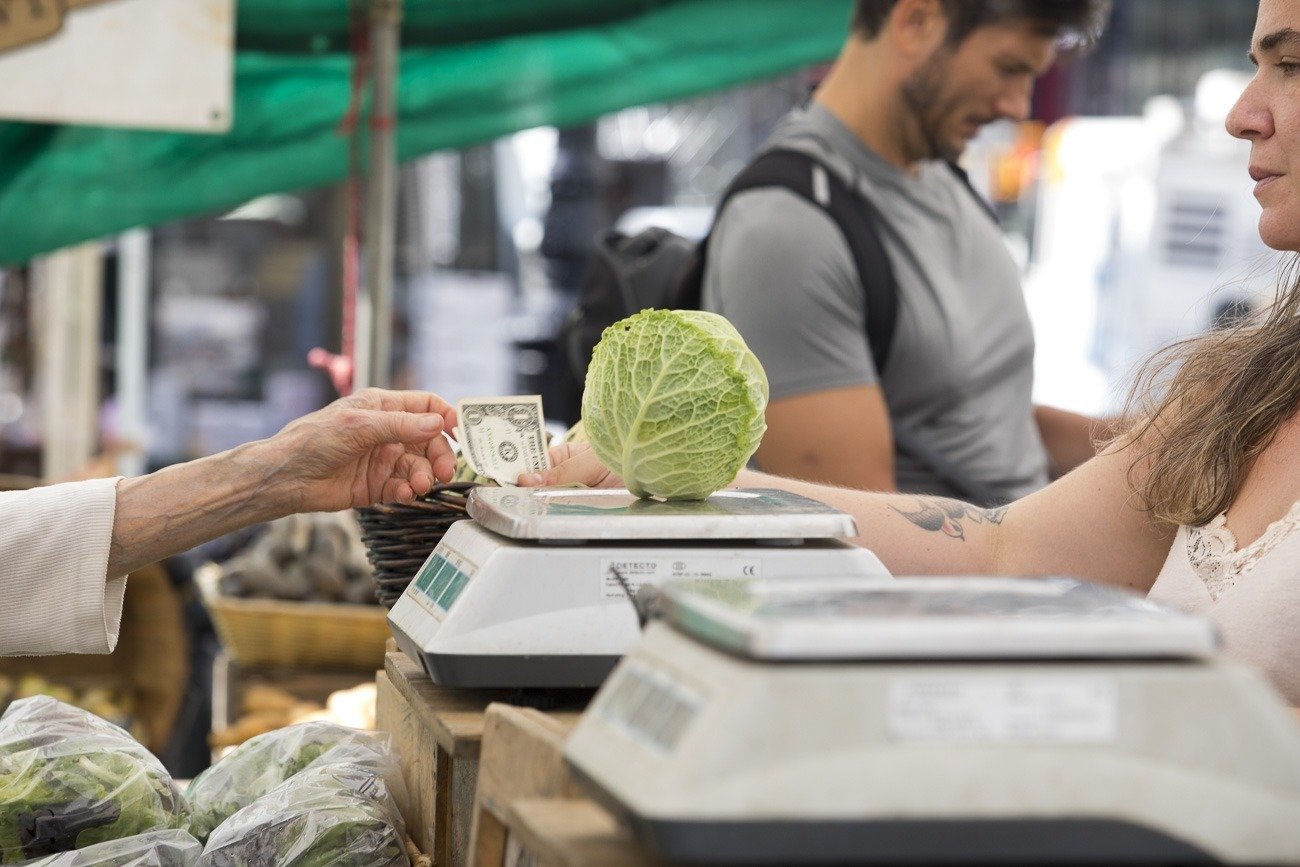How Local and National Organizations Are Connecting Farms to the Food Insecure
In early April, stories of farmers losing their markets and plowing produce into the ground while hungry people waited in long lines at food pantries began to appear in major news publications. Meanwhile, in Northern Michigan, the Northwest Food Coalition ordered 800 pounds of rainbow carrots from Providence Organic Farm, helping them unload what would soon be the last of their storage crops.
The farm-to-food pantry journey was possible due to the Local Food Relief Fund, a fundraising campaign organized by a local non-profit, Groundwork Center for Resilient Communities, in response to COVID-19. In one week, the campaign raised more than $130,000.
“This money from Groundwork means we can put money into the hands of farmers now,” said Val Stone, the Coalition’s staff coordinator, “and then when the crops come up, the pantries will also be able to have those fruits and vegetables.”
In its quick establishment, the Local Food Relief Fund resembles many other initiatives that have been set up at lightning speed to help communities confront the impacts of the coronavirus pandemic, but it’s unique — if not alone — in its attention to connecting the needs of farmers and food-insecure communities.
Coronavirus Impacts
In the past month, more than 26 million Americans filed unemployment claims. Children from food-insecure households who typically rely on school meals are also now at home, and demand at food pantries has skyrocketed.
Grassroots community action has been swift. In Kentucky, laid-off restaurant workers are making meals for families in need through Nourish Lexington. In Washington, D.C, Little Sesame transformed its fast-casual restaurant kitchens into community kitchens to feed the city’s most vulnerable. World Central Kitchen is feeding people in hard-hit regions all over the country and is enlisting the help of chefs with shuttered restaurants.
In agriculture, farmers have lost sales channels due to the closing of restaurants, institutions, and markets in some locations and are struggling to reinvent their business models. In response, communities have shown increasing support for local food, and organizations have stepped in to help. American Farmland Trust and Georgia Organics have both launched relief funds for farmers.
Programs that connect the two issues — food insecurity and farm struggles — are still rare.
The government has also been slow to act, resulting in millions of pounds of lost produce. Florida’s state commissioner of agriculture alerted the United States Department of Agriculture (USDA) to the problem as far back as late March, asking the agency to help connect more farmers to federal food purchasing programs. In mid-April, the American Farm Bureau and Feeding America put more pressure on the agency.
The Trump administration finally announced it will spend $3 billion to buy agricultural products for needy families. But when and how that program will roll out is unclear, and that money is likely to go to large producers who are already federal contractors, not small farms selling into local markets.
“The truth is a lot of farmers are very close to the edge. We couldn’t see people taking care of these farmers in the way that they need it,” said Andrew Gunther, executive director of A Greener World, which also quickly launched a fundraising platform to pay farmers to get food to people who need it. “We’re trying to make that direct correlation between ‘you give money to the farmer to stay in business’ and ‘they have to deliver that product to people in need.’”
In other words, community organizations are not waiting around for a lifeline; they are mobilizing quickly to solve the problem on their own.
For Groundwork, A Groundswell of Support
Based in Traverse City, Michigan, Groundwork Center focuses on many facets of building resilient communities, from transportation and energy systems to local food and farm economies. “We’re fortunate to be in a community that really has supported our local farmers with restaurant sales and also school sales. It’s just a part of life in the community here to support local agriculture,” said programs director Meghan McDermott. “But we realized that meant that farms have built their businesses around the capacity for restaurant sales and institutional markets, and those were obviously collapsing.” Some local farmers’ markets were also shut down or postponed.
That reality was discussed at a staff meeting on March 26, during which the team tried to decide how they should respond to COVID-19’s impact on their community. In addition to hearing from struggling farmers, they were concerned about the record number of people applying for unemployment in Michigan and were already hearing reports of increased demand at local food pantries.
It took them 11 days to survey farmers and pantries throughout the region about what they were facing, establish a plan to raise money to pay farmers to supply pantries, and bring on partners.
On April 7, they launched the Local Food Relief Fund with a fundraising goal of $30,000. Donations surpassed that goal within 36 hours, so McDermott raised it to $50,000. Then, she raised it again, to $100,000. When the campaign ended a week later, 504 individuals had contributed a total of $130,597. The vast majority of the donors were in Northern Michigan and almost all were in state, McDermott said.
Stone, of the Northwest Food Coalition, one of the food pantry partners, referred to the amount of money raised as “miraculous.” Now, it is being allocated to the Coalition, the Manna Food Project, and Food Rescue of Northwest Michigan, which will handle distribution. The two pantry groups will have to use the funds to purchase local food directly from farms. There are stipulations to use a percentage towards purchases from smaller farms and to pay the farmers a high enough price to help them stay afloat.
Stone said she sees the fund as being especially important in the coming months, as harvest season begins and the economic effects of the pandemic linger. “In three or four months, when hopefully people are back to work, that doesn’t mean people are going to be financially stable. Food is still going to be an issue.”
Farmers face a similar uncertainty. “It’s super hard to predict what’s going to happen,” said Andrea Romeyn, co-owner of Providence Organic Farm, which fulfilled the first order from the Local Food Relief Fund and will continue to sell to the Northwest Food Coalition. “In the past, our market sales would go up to $100,000. Am I going to lose $100,000 because they’re not going to open markets? I don’t know. Am I going to be able to make that up with CSA members? I don’t know.”
In other parts of the country, communities are solving for the same issues at a smaller scale, one farm and food pantry at a time. In Petaluma, California, Double 8 Dairy lost its customers when Bay Area restaurants and coffee shops shut down. It started a GoFundMe page that has so far raised more than $11,000 for the farm to do weekly deliveries of 1,200 gallons of milk to the San Francisco-Marin Food Bank. And in the Hudson Valley, north of New York City, Glynwood Center for Regional Food and Farming just launched the Food Access Initiative Fund, to pay small farms to donate to local food pantries and cover the cost of subsidized CSA shares for needy families. It has raised over $20,000 so far, and the team plans to expand the program in the future.
“In three or four months, when hopefully people are back to work, that doesn’t mean people are going to be financially stable. Food is still going to be an issue.”
Small Farms Across the Country
Programs like Groundwork’s have been successful at least in part because they rallied local communities that care about their farmers and residents, but other groups are also using their national platforms to promote local farm-to-food-pantry fundraising efforts.
A Greener World is a national organization that supports small farms and promotes sustainable agriculture, primarily through a portfolio of farm certifications like Organic, Grassfed, and Animal Welfare Approved. When inspections were put on hold, Gunther said, the team began innovating to establish new ways to support their network of farms through COVID-19.
“We realized we have the relationships, experience and administrative resources to help get food to people who need it while helping to keep farms in business,” he said.
A Greener World’s campaign creates individual fundraisers for a farm to raise funds to donate food to a partner in its local community and then aggregates those small fundraisers into one page that can be shared broadly. Pigeon River Farm in Wisconsin, for example, is raising money to donate its eggs to the Interfaith Food Pantry nearby. In Iowa, Driftless Hills Farm is raising funds to donate 70 pounds of pork to the Decorah Community Food Pantry. As more opportunities for connections are uncovered by farms around the country, A Greener World will be continuously adding new opportunities to give to the campaign.
Gunther said the program was up and running in just four days and that he expects many more farms and pantries to be added in the coming weeks. “Many of the supply chains we’re working with are shorter and more nimble, allowing them to be more responsive to changing needs,” he said.
That’s in contrast to the long, complicated, specialized supply chains that dominate the country’s larger food system. Large farms that sell to big buyers, when left without a market, have had little choice but to dump milk, for example, because finding another outlet for that milk is a more complex challenge. Many large farms that sell to distributors don’t even know where their food is headed when it leaves the farm. They may not have the capacity to truck the volume of food to another destination, to package or process the food themselves, or to quickly change what they’re growing to accommodate a new buyer.
McDermott, at Groundwork said that one thing she hopes Americans will take away from the coronavirus crisis is the resiliency and flexibility of local food systems, which can make quick connections to fill gaps, while longer supply chains are trickier to adjust.
“When you start to see the cracks in the industrial, nationalized food system… this can illustrate local solutions that help communities in a very tangible way. Certainly we’re hopeful that this fund may go beyond this crisis, and it’s an idea that holds water whether or not there’s a pandemic happening. I think it has a lot of potential,” she said. “But [after the pandemic], I really hope that American society as a whole has a greater understanding of the value of a localized food system.”
Top photo by STOCKSTUDIO/ Adobe Stock.
More Reading
Meet muscadines, the native grapes of the southern U.S.
April 1, 2024
Eat more grains — and keep it local
September 29, 2023
Why We Love Photographing Our Farmers' Market Hauls
August 9, 2023
Georgia’s Peach Crop Loss Is About More Than Just Fruit
August 7, 2023
6 Recipes for Seasonal Drinks Inspired by Summer’s Bounty
June 28, 2023
Get to Know These 9 Types of Mustard Greens
June 14, 2023
The Movement to Revive Local Grains — and the Infrastructure Required to Keep It Going
June 12, 2023
A Guide to Winter Citrus Varieties
February 1, 2023
Get to Know Collard Greens
January 18, 2023
Coming Soon: More Native Foods in the National School Lunch Program
January 11, 2023


